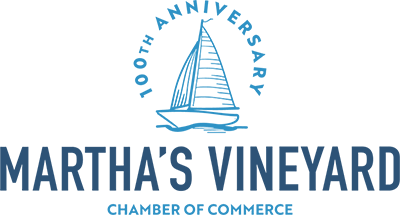ASL Auto Tour
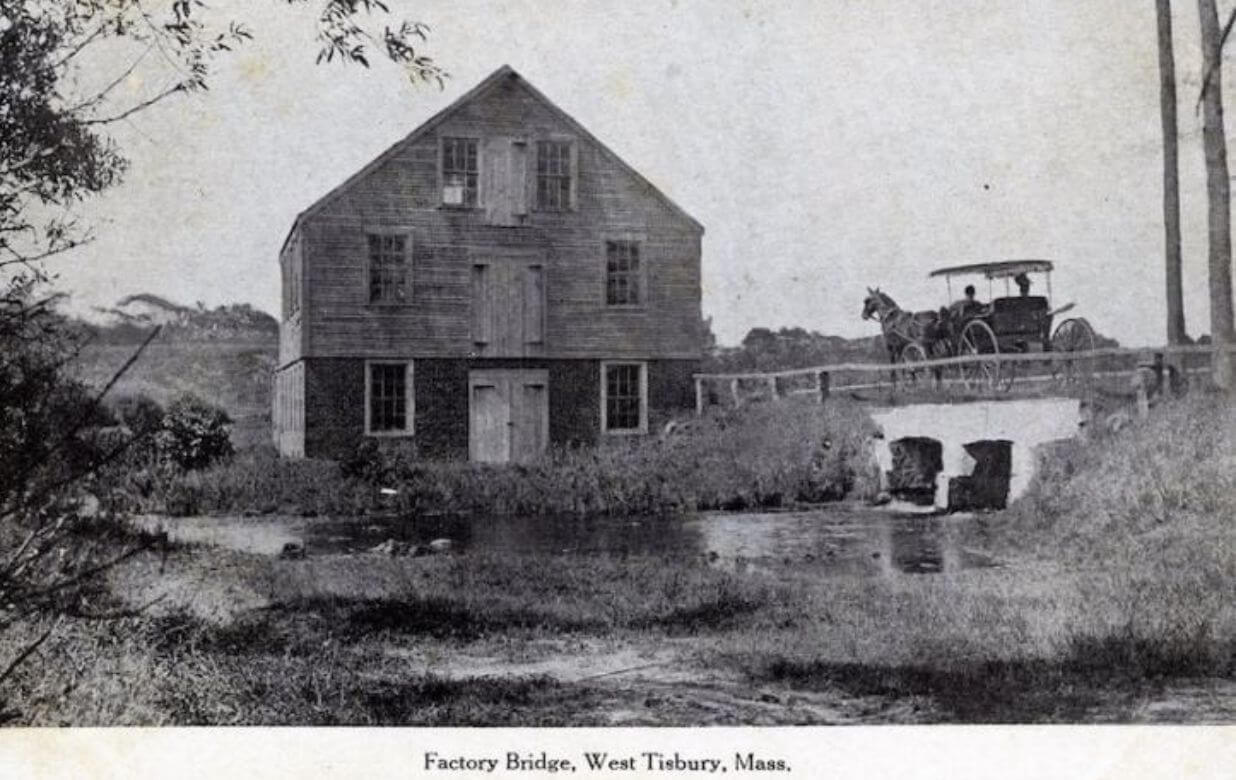
It's believed that the hereditary deafness on Martha’s Vineyard (MV) was the product of a gene introduced into the population by immigrants from the County of Kent, England, in the 1600s. Because heredity was not well-understood until the early 29th century, no one could predict if a child would be born Deaf or hearing. Over time, this led to the natural development of an English-influenced signed language that became a shared signed language for Deaf and hearing residents alike. By the mid 1800s the prevalence of deafness on the island was striking. On the mainland, 1 in every 5,730 people was born Deaf, but in Chilmark 1 in 25 and in the village of Squibnocket it was 1 in 4. It's also believed that MV's unique signed language influenced the development of American Sign Language (ASL) when students from Martha’s Vineyard attended the American School for the Deaf in Hartford, CT, between 1825 and 1892.
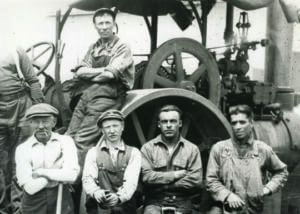
The Building of State Road | Courtesy MV Museum
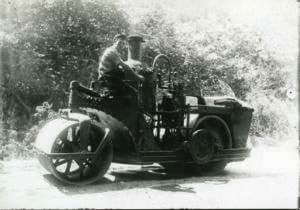
The Building of State Road | Courtesy MV Museum
There are no monuments to Chilmark’s signed language community, no statues, plaques, roadside boulders, or carefully preserved house museums. But traces remain: modest farms and simple dwellings from the 19th and early 20th centuries, when, in Nora Groce’s words, “Everyone here spoke sign language."
TOUR STOP #1
Martha’s Vineyard Chamber of Commerce
24 Beach Street, Vineyard Haven
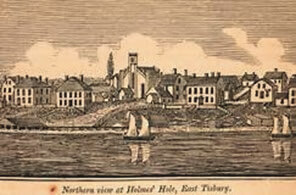
Courtesy MV Museum
Beach Street, which runs in front of the Chamber of Commerce building, was once the gateway to the village of Holmes Hole. Until the 1830s, a 6-foot-deep channel called Bass Creek flowed where Water Street and Lagoon Pond Road run today, and the sail-powered ferries from the mainland docked at the foot of Beach Street, where the Five Corners intersection is today.
Judge Samuel Sewall, whose account of a 1714 visit to Martha's Vineyard contains the first mention of a “Deaf resident” of the Island, began his journey at Beach Street. So, perhaps, did Jonathan Lambert (the Deaf man he met), when he immigrated to the Island in 1694.
TOUR STOP #2
Grange Hall
151 Lagoon, Vineyard Haven
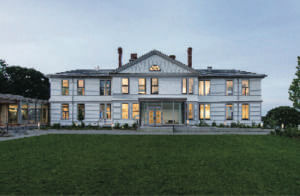
Located on a hilltop overlooking Lagoon Pond and Vineyard Haven Harbor, the Museum preserves, exhibits and interprets materials related to the history of Martha's Vineyard signed language (MVSL) legacy. Thomas Hart Benton's portrait of Joseph "Josie" West, a Deaf farmer from Chilmark, and Alexander Graham Bell's note book, from his research here during the1880s, is viewable, but not on permanent display.
_____________
Thomas Hart Benton's portrait of Joseph "Josie" West, a Deaf farmer from Chilmark, is on permanent display in the "One Island Many Stories" gallery. (Below Right)
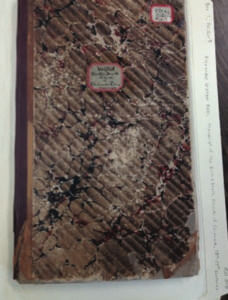

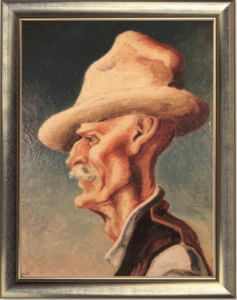
TOUR STOP #3
Grange Hall
1067 State Road, West Tisbury

Built in 1859, this post-and-beam building has long been a cornerstone of MV's community life. It served as a gathering space for farmers, civic leaders, and families. What set it apart from similar rural spaces was the mutual use of MVSL. Deaf and hearing residents alike participated fully in events held here agricultural fairs and social gatherings to debates and voting. Martha’s Vineyard Signed Language (MVSL) fostered a seamless exchange of ideas and created a uniquely accessible environment.
TOUR STOP #4
Abel’s Hill Cemetery
322 South Road, Chilmark
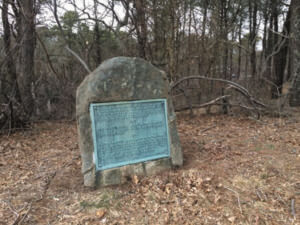
Abel's Hill, named for 17th-century Wampanoag resident Abel Wauwompuhque, was the site of the first 2 Congregational meetinghouses in Chilmark. The old section of the cemetery is located at the top of the hill, behind the parking area (directly ahead of you as you drive in). At least 28 members of the Chilmark deaf community are buried on the hilltop, including Jared and Jerusha Mayhew (Stop #9), "One-Armed Ben" Mayhew, Josie West (Stop #2), George and Dedamia West (Stop #8) and Katie West (Stop #5). The MV Museum has a name-list of students who attended the American School For The Deaf in Hartford, CT between 1825-1892. (Many of them, their names, parents, and family members can be located here).
TOUR STOP #5
Chilmark Public Library
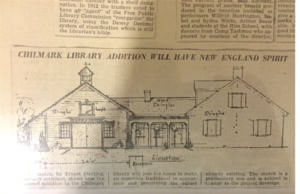
Vineyard Gazette Newspaper Clipping
Founded in 1882, the library was originally located in E. Elliot Mayhew's store, and then in the town hall. In 1953, the town purchased the home of Katie West, sister-in-law of George and Josie West. Katie was the last Deaf MVSL signer.
The library opened in its new home in 1956. Since then, the library has been expanded to include her house. (Originally built for Captain William Tilton in 1790). Call ahead to schedule a tour of the library/Katie's. The library maintains an extensive collection on Chilmark's shared signed language community.
TOUR STOP #6
Beetlebung Corner
South Road, Junction of Middle Road & Menemsha Crossroad, Chilmark
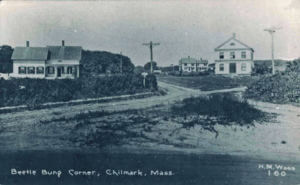
Beetlebung Corner (Town Hall on Right) | Courtesy MV Museum
One of the town's three one-room schoolhouses (now the police station) stood on the South Road side of this intersection since before 1850.
Elliot Mayhew moved his general store, the Chilmark Cornerway, from the Old Chilmark Center (Stop #10) on Middle Rd., to this new center on State Rd. Here, it doubled as post office and library and burned in 1910. The current Chilmark Store was built soon after. A new town hall was built on the Middle Road side of the intersection in 1887, and the Methodist church (now the Chilmark Community Church) was moved to the Menemsha Crossroad in 1910.
TOUR STOP #7
Squibnocket Beach
34 Squibnocket Road, Chilmark

The town of Chilmark has no natural deep-water harbor, but in the18th and 19th centuries, many Chilmark fishermen used Squibnocket as a base of operations, launching their small boats from the beach in the morning and pulling them above the reach of the tide at night.
TOUR STOP #8
Jared & Jerusha Mayhew House
231 State Road, Chilmark
This is a private home. Please honor their privacy.
Nearly hidden from the street by high hedges, this turreted Queen-Anne-style house is recognizable by its yellow-painted clapboards, white trim, and red roof. Built in the late nineteenth century, it was the home of Jared Mayhew and his wife Jerusha Reed…until the 1898 marriage of their daughter Ethel Love, Jared was a prosperous farmer who raised sheep on over 100 acres of land. Jared, like his parents, Benjamin and Hannah, his older brother Benjamin, his uncle Alfred, and his aunts Ruby and Love—were deaf. He is said to have been the last Chilmark resident born into a family where deaf children outnumbered hearing ones. Jared attended the American School for the Deaf in Hartford, CT from 1864-1869. His brother, Ben, and relatives Alfred, and Lovey attended before him. His wife was hearing.
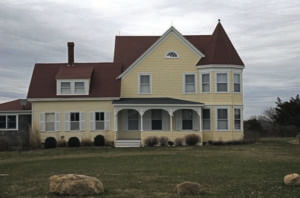
Courtesy MV Museum

Courtesy MV Museum
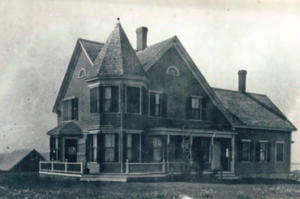
Courtesy MV Museum
TOUR STOP #9
Menemsha Harbor
Menemha Creek, Dutcher Dock, Chilmark
Menemsha Harbor was once home to a close-knit fishing village where Deaf and hearing families worked side by side. Signing was a natural part of daily life, used freely on boats, docks, and in homes, allowing Deaf fishermen to fully participate in all aspects of the community. A shared signed language bridged generations and family lines, shaping a harbor culture rooted in inclusion and cooperation. The old Creekville Post Office served as a gathering place for news, conversation, and connection - where all shared in the island’s natural signed language.
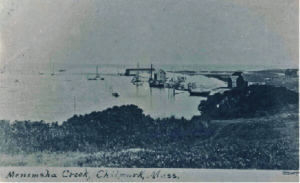
Courtesy MV Museum
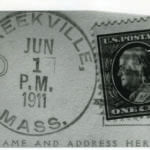
Courtesy MV Museum

The Creekville Post Office | Courtesy MV Museum
TOUR STOP #10
Old Chilmark Center
Middle Road, junction of Tea Lane & Meetinghouse Road, Chilmark
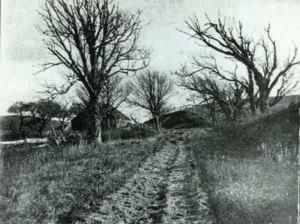
Tea Lane
Courtesy MV Museum

Courtesy MV Museum
Until the early 1900s, the village center of Chilmark was located near these crossroads. Deaf residents of the town would have come here to worship at the Congregational and Methodist Churches, do business or socialize at one of the two general stores, or attend meetings at the Town Hall. The roads that converge here all date to the 1700s. Most Deaf citizens of Chilmark would have spent their lives on widely scattered farms like those that, even today, border Middle Road. The distinctive "dry stone" walls bordering the fields were created by stacking stones dug out of the fields to make plowing easier.
TOUR STOP #11
Lambert’s Cove
281 Lambert's Cove Road, West Tisbury
Jonathan Lambert’s father, Joshua Lambert (or Lumbert) immigrated to America from the English county of Kent in 1634. By 1639 his family had settled in Barnstable. In 1694 Joshua’s son, Jonathan Lambert (MV's first Deaf settler) and his hearing wife, Elizabeth Eddy, purchased land from a Wampanoag sachem; and built their home overlooking James Pond, where they farmed, fished, and became part of the island’s tight-knit community. They raised 7 children (2 were Deaf), The land on which they settled remains in private hands, but the cove, with its crescent-shaped white-sand beach, is public. There are 2 parking areas: James Pond Reserve and Lambert's Cove Beach which is restricted to West Tisbury residents & guests during the summer months.


Much of this history might have remained hidden if not for Joan Poole Nash, whose collection of MVSL signs - gathered from her hearing great grandmother and other signing community elders, offers essential insight into the Island’s unique signed language. Her work reveals links to ASL and hints at connections with Wampanoag Sign Language.
WHEN DRIVING TO EACH OF THE STOPS, A NOTE:
Please be mindful!
Please note that some of these stops are private properties and the landmarks are no longer in existence; and no parking space available: it is important, as well as courteous, to honor the resident’s privacy. Please drive by slowly to identify the location and read the info in the car elsewhere – where public parking is available (i.e. library, town hall, village store, cemetery, etc.).
Photos Courtesy of MV Museum
BASIC SIGN LANGUAGE WEBINARS
Manual ABC’s:
Everyday Signs:
Everyday Signs (Dialogues):
Things to Do in Martha’s Vineyard:
Things to Do in Martha’s Vineyard (Dialogues):
Business Signs:
Business Signs (Dialogues):











